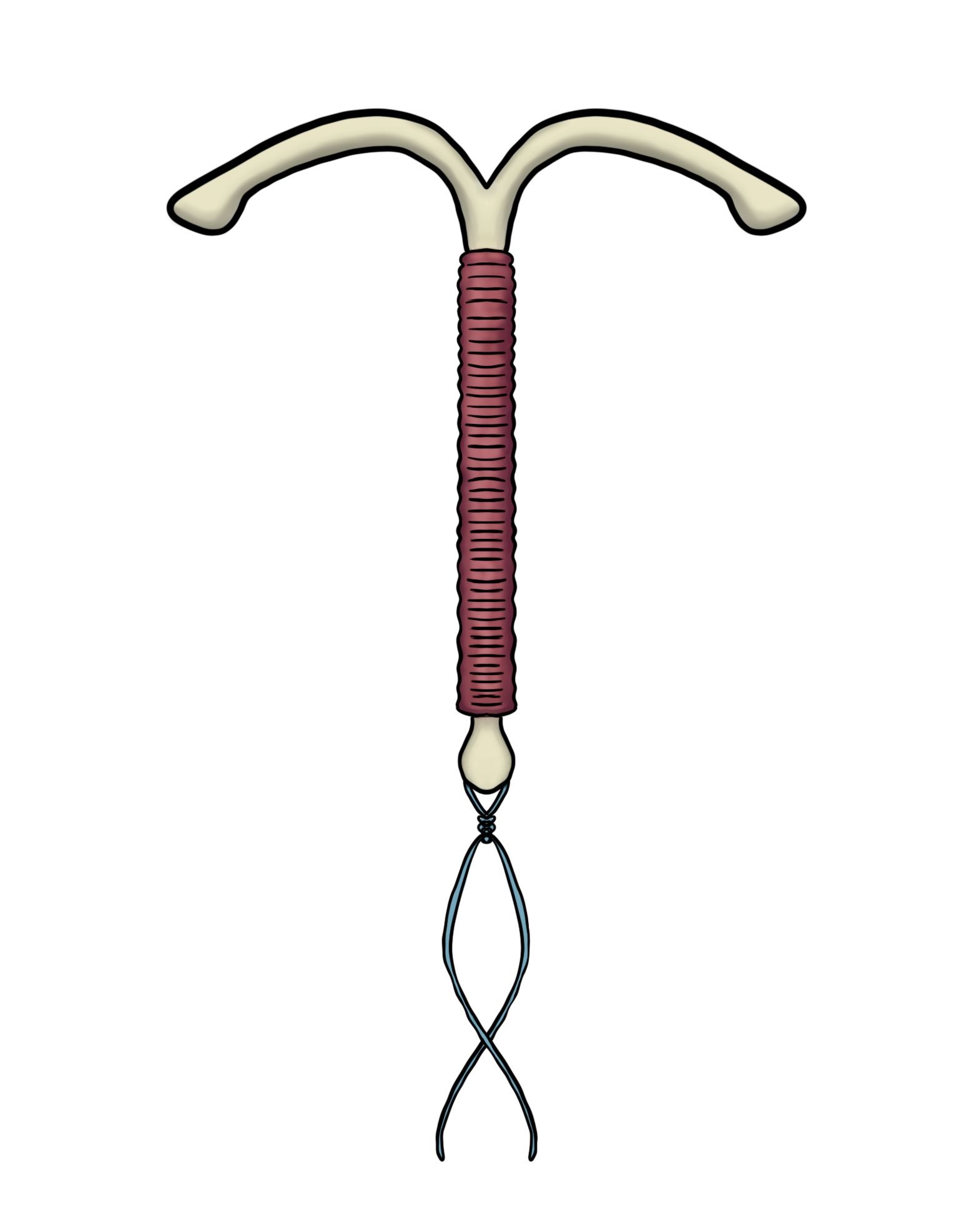What is it?
An Intrauterine device (IUD) is a small ‘T-shaped’ device that is placed inside the uterus by a health professional and is left there for 5 to 10 years depending on the type. The IUD has fine threads attached to it that come through the cervix into the vagina once inserted into the uterus. When inserted, you (and your partner) usually can’t tell that the IUD is even there. IUDs don't prevent you from getting a sexually transmitted infection (STI) so it's important to still use condoms as well.
How does it work?
There are two different types of IUDS; the Hormonal IUD and the Copper IUD. Both types are effective at preventing pregnancy, but in different ways. The hormonal IUD lasts for up to 5 years and works by releasing a progesterone hormone, prevents pregnancy by:
- thickening the mucus in the cervix so sperm cannot reach the uterus
- changing the lining of the uterus so that a fertilised egg cannot stick to it to start a pregnancy
- it can also sometimes stop the ovaries from releasing an egg each month
The copper IUD doesn’t contain any hormones and instead has copper bands and/or wire. The copper IUD lasts for up to 10 years and prevents pregnancy by:
- being toxic to sperm, which prevents sperm from reaching and fertilising an egg
- changing the lining of the uterus so that a fertilised egg cannot stick to it to start a pregnancy
The copper IUD can also be used as a form of emergency contraception instead of the emergency contraceptive pill (morning after pill).
How effective is it?
Both types of IUDs are 99% effective in preventing pregnancy.
Where can you get it?
You can get an IUD from your doctor or sexual health clinic and this will usually require two appointments. The first appointment is to talk about IUDs, whether this form of contraception is right for you, what you can expect when having an IUD inserted and to give you a prescription (script) to buy an IUD. Once you have a script you will then need to take this to a pharmacy and buy an IUD to take to your second appointment. You can also buy your IUD from some sexual health clinics (like Sexual Health Quarters). Your second appointment is when the IUD will be inserted.
How much does it cost?
The cost of an IUD varies between pharmacies so it’s worth calling around to find the best price.
The hormonal IUD costs around $40 if you have a Medicare card and around $6 if you also have a Health Care Card. If you don’t have a Medicare card then the hormonal IUD can cost around $200.
The copper IUD isn’t covered by a Health care Card and costs around $120 outside of a public hospital setting.
Both types of IUDS can also be purchased through Sexual Health Quarters. A list of their prices can be found on the Sexual Health Quarters website (external site).
What’s good about it?
- IUDs are highly effectively at preventing pregnancy.
- IUDs are cheap considering the length of time they last for.
- It can be removed at any time (by a health professional) with fertility returning quickly.
- IUD insertion doesn’t usually need a general anaesthetic.
- The copper IUD can be used as emergency contraception.
Things to think about
- IUDs don’t protect against STIs.
- Pain or discomfort can be experienced after insertion.
- Some people may experience changes with their periods. This can include heavier, longer, and more painful periods with the copper IUD or frequent, light bleeding in the first few months of using the hormonal IUD. This may improves after the first few months of insertion.
- Each month you have to check that the IUD is still in place (by placing a finger into the vagina to feel for the fine threads).

 Fun
Fun